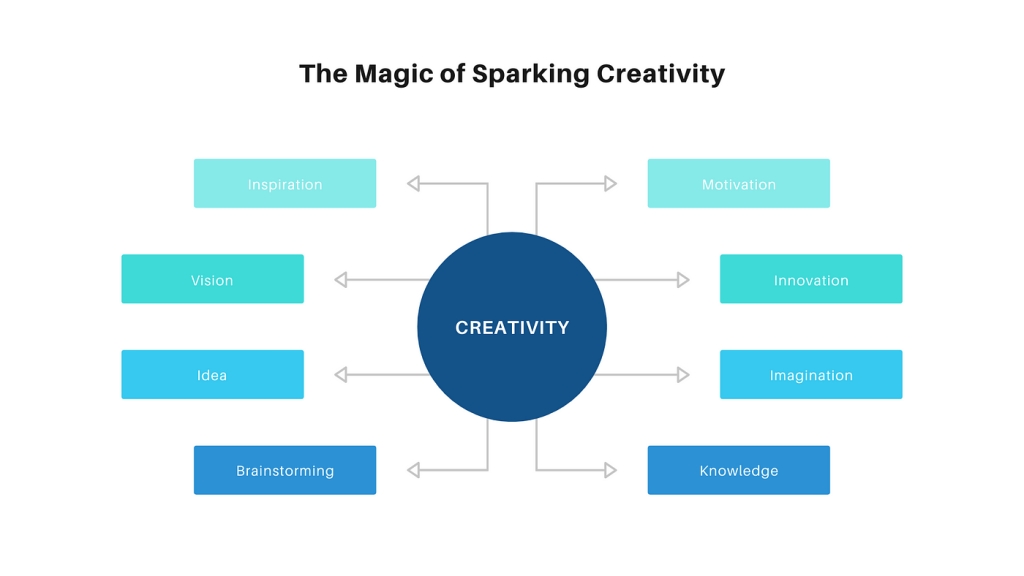Mind Mapping for Productivity, Creativity, and Brainstorming
Ever find yourself stuck in a creative rut or overwhelmed with information overload? Picture this: you’re staring at a blank page, your thoughts are all over the place, and the clock is ticking. Enter mind mapping, the superhero of organizing thoughts and sparking creativity.
What is Mind Mapping?
Mind mapping is a visual brainstorming tool that enables you to structure information, helping you to better analyze, comprehend, recall, and generate new ideas. It’s sort of like a tree—there’s a central idea (the trunk), related themes (the branches), and even more specific ideas (the leaves). It’s a powerful technique preferred by everyone from students to CEOs because it mirrors the way our brains actually work.
The Birth of Mind Mapping
The concept of mind mapping can be traced back centuries, but it was popularized by Tony Buzan in the 1970s. He believed that traditional note-taking was linear, boring, and restricted the creative flow. Buzan’s method leveraged color, images, and a non-linear structure that captured the dynamism of the human brain.
Why Mind Maps Work
Our brains are not designed to process information in a linear fashion. We’re thinkers in technicolor, with neurons firing off in all directions. Mind mapping allows us to tap into the brain’s propensity for making connections. It uses imagery, which is processed by the brain far quicker than text, and colors, which help to categorize and memorize information. When we can see connections and relationships, we generate ideas at a much faster rate. In other words, mind mapping can turn a brainstorm into a brain-blitz.
Getting Started with Mind Mapping
To create a mind map, you start in the center with a main idea, then branch out into key concepts or themes related to that idea. From there, you drill down into each concept with further details, linking thoughts and ideas with lines.
Here’s a step-by-step guide on how to start:
Step 1: Place your central idea in the middle of the page.
Step 2: Branch out major subtopics around this central idea.
Step 3: For each subtopic, draw smaller branches that represent more specific ideas.
Step 4: Use keywords instead of long sentences for clarity and a quick overview.
Step 5: Add images, symbols, or codes to create a powerful visual impact.
Step 6: Assign different colors to different branches or themes for visual sorting.
Step 7: Connect branches that interlink to show relationships.
Mind Mapping Tools
While pen and paper are excellent for quickly getting your ideas out there, digital tools offer distinct advantages. They’re perfect for collaboration, and you can edit mind maps without starting over, not to mention the ability to add multimedia. There are numerous apps and software designed for mind mapping, like XMind, MindMeister, and MindNode.
Boost Productivity with Mind Mapping
Productivity is all about efficiency—doing more, faster. Mind mapping streamlines your workflow by organizing your thoughts in a way that’s quickly accessible. It cuts down the time taken to review information and allows you to spot gaps in your knowledge or project plans. This clarity leads to less procrastination and more effective time management. If you’re tackling a complex project, a mind map can be your roadmap, highlighting where you are, where you need to go, and what’s missing. It encourages a bird’s-eye view of your work, leading to better decision-making.
Unlock Creativity with Mind Mapping
Creativity often boils down to making unexpected connections between concepts. Mind maps encourage you to find and create those connections. When you can visualize how ideas play off one another, you’re more likely to think outside the box and come up with creative solutions. Since mind maps don’t force a hierarchical structure, less dominant ideas can find their space, potentially leading to innovative breakthroughs.
Power Up Brainstorming Sessions with Mind Mapping
Brainstorming sessions are a staple in collaborative environments, but they can sometimes lead to chaos, and valuable ideas can be lost in the noise. Mind maps bring structure to brainstorming. When used in a group setting, they invite all participants to see the big picture and add their thoughts in real time. It’s a visual conversation that levels the playing field—everyone’s contribution is visible, which can lead to a more democratic and comprehensive dialogue.
Mind Mapping for Learning and Memory
For students and lifelong learners, mind maps can be a secret weapon. They transform monotonous notes into colorful and memorable diagrams. The process of creating a mind map helps with understanding and retaining information. When reviewing, the visual cues in a mind map trigger recall so that you remember more of what you learned.
Final Thoughts

Mind mapping is a testament to the fact that visual tools can substantially enhance cognitive functions. It empowers you to take control of your thoughts, be it for a complex work project, studying for exams, or planning life’s milestones. The beauty of mind mapping lies in its simplicity and its ability to scale from the simplest of tasks to the complexity of business strategies. Whether you’re a visual thinker or someone who’s never used a colored pen for notes, experimenting with mind mapping can unearth new layers of productivity, creativity, and efficiency in your life.
Like any skill, mind mapping gets better with practice. Start small, but think big. Remember, it’s not about drawing a work of art; it’s about mapping your way to a clearer, more creative mind. Embrace this versatile tool, and watch your ideas grow from seeds to blossoming trees of endless possibility. Give it a try—the only thing you’ve got to lose is the chaos.


